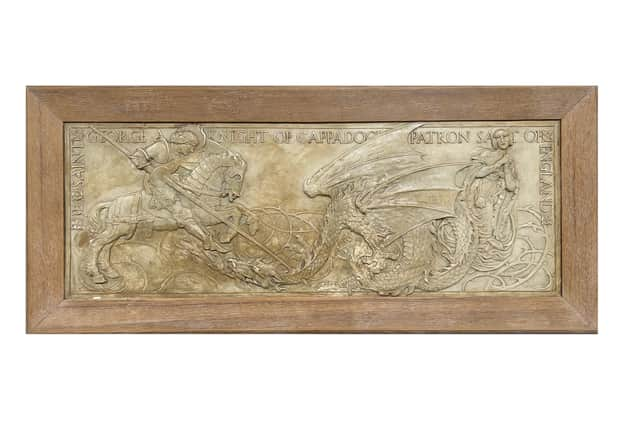Rare St George and Dragon tile panel sells for £17,000 in Harborough


Made by Pilkington’s Royal Lancastrian Pottery circa 1908, the almost 4ft wide plaster tile panel featuring St George and the Dragon, was the standout lot in a Fine Art and Antiques auction at Gildings Auctioneers on September 6.
It was bought by prominent expert in British Arts and Crafts pottery, Alison Davey of Cotswolds-based AD Antiques, on behalf of a private client.
Advertisement
Hide AdAdvertisement
Hide AdEstablished in 1892 in Greater Manchester, Pilkington’s was a Northern powerhouse in the production of ceramic tiles, before it diversified into the decorative vases, bowls and other pottery wares it became famous for.


The panel came from the collection of Abraham Lomax, Pilkington’s chemist between 1896 and 1911, a definitive period when the firm established its reputation for innovations in glazing, including lustre glazes. As the chemist, the person in charge of glaze development would undoubtedly have been Abraham Lomax.
“We’re delighted with the result achieved for this St George and the Dragon tile panel, which is testament to its significance in the history of Pilkington’s Lancastrian Pottery and its unique provenance from Abraham Lomax’s private collection,” said Gildings director and 20th century art and design specialist, Will Gilding.
“Given its rarity, we expected the panel to attract great interest from collectors around the world, but as the first of only four of the original six in existence to be sold, the value was not easy to determine.”
Advertisement
Hide AdAdvertisement
Hide AdThe panel was made after the design was originally used on a lustre-fired St George and the Dragon vase, which sold at a recent auction for £75,000 - a world record for Pilkington’s. It was offered alongside a book Abraham Lomax wrote about Pilkington’s entitled, ‘Royal Lancastrian Pottery 1900-1938: Its achievements and its makers’, where he stated that “more use should be made of this masterpiece of art and craftmanship than just decoration of two vases."
Heeding this advice, Pilkington’s used the design to produce six plaster casts in slab form which were given to its designers William Mycock and Gordon Forsyth, along with another artist and the firm’s two owners. The final slab was given to Abraham Lomax.